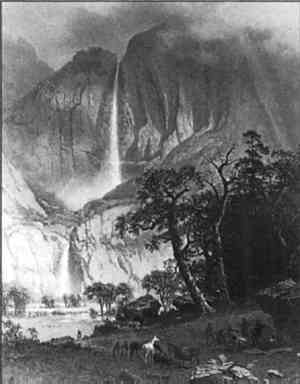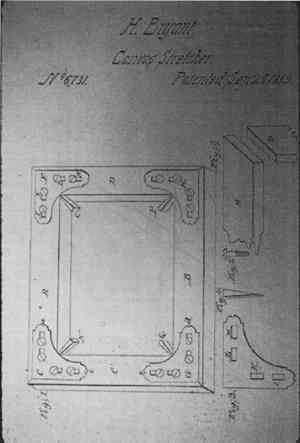THE AMERICAN ARTIST'S TOOLS AND MATERIALS FOR ON-SITE OIL SKETCHINGALEXANDER KATLAN
1 INTRODUCTIONAlthough on-site oil sketching was practiced in the 18th century (Conisbee et al. 1996), it became very popular among professional and amateur artists in the 19th century, especially as railroads made access to the countryside easier. Having had negative experiences with poor-quality materials, artists sought materials of the highest quality. It is not surprising that American artist's colormen firms—firms specializing in selling art materials, preparing canvases, and grinding pigments—often felt obliged to defend their materials and pigments. Although colormen firms had been established for some time in Europe, in the United States they began in the late 18th century on the docks of New York City, where they sold their wares from the unloaded cargo of trans-Atlantic sailing vessels (Gottesman 1954). In the 1830s and 1840s, these firms were more formally organized, as suggested by the stencil marks and labels of such companies as Edward Dechaux, Theodore Kelley, Goupil & Co., and William Schaus.1 These firms provided a uniformity of art materials, a manufacturing capability (Gottesman 1965),2 and a quality control that was sometimes absent in the 18th century. Take, for example, William Schaus, who was first sent to New York City in 1848 as an agent and representative of Goupil & Co. of Paris to scout out the market and possibly look for painters to be represented by the new American firm Goupil, Vibert & Co. Schaus “discovered” William Sidney Mount and had his paintings engraved in Paris. By 1852, Schaus had established his own firm dealing in fine arts and artists' materials. He Americanized his name from Wilhelm to The American firms offered a more diverse selection of materials than the individual artist would have been able to obtain on his own, especially materials from European suppliers. The colormen introduced new materials and new inventions to the artist. When cheaper and lighter materials became available, they were rapidly adapted, developed, or patented by these firms. American artists, aware of these technical advances, quickly began using the new tools of their craft. They even depicted them in their paintings, as seen in Albert Bierstadt's (1830–1902) painting Cho-looke, The Yosemite Fall(fig. 1) and Sanford Gifford's (1823–80) painting The Artist Sketching at Mount Desert Maine (1865) (collection of Jo Ann and Julian Ganz, Jr.).
The artists proudly and intentionally depicted the tools of their craft, possibly to indicate their newness and also to show that they were modern and up-to-date painters. These art materials liberated both American and European artists from the constraints of their studios and gave them the freedom of the outdoors, which became the studio for the oil sketch. In defense of the quality of American pigments, in 1886 the colormen firm of Janetzsky & Weber, Philadelphia (later Frederick Weber & Co.) felt it necessary to publish “The Artists' Manual of Pigments showing their composition, conditions of permanency, non-permanency, and adulteration; effects in combination with each other and with vehicles; and the most reliable tests of purity” (Standage 1886). Janetzsky (Standage 1886, v-vii) states their justification for such a publication in the preface:
Earlier complaints and rebuttals can be found in the personal letters of American artists and are not limited to American colormen firms. In a letter to Asher B. Durand from London in November 1856, Cropsey (1856) defends Winsor & Newton, an English colormen firm, and states:
The negative experiences of American artists did not prevent them from quickly capitalizing on new developments and technical inventions. Even the language for these new materials changed radically in the 19th century. The French term pochade, meaning a rapidly executed small oil sketch, or “rough sketch,” was expanded to include sketches done outdoors. Later, the term often referred to a final painting (Mayer 1969). This term appears in the American trade catalogs of Edward Dechaux in the 1860s (Dechaux 1860). Even the small Japanned boxes that served as oil sketch boxes were often called pochade boxes. Today we sometimes call these oil sketches “thumb-box oil sketches.” Another example of a linguistic change is the word “stretcher,” which appears to have developed in the 1800s and is probably an Americanization of the English terminology “stretching-frame” or “canvas-frame.” According to the Oxford English Dictionary, the first use of the term “stretcher” in relationship to paintings occurred in English literature in 1847; the word appears in the U.S. patent issued to H. Bryant on September 25, 1849 (fig. 2).
|

